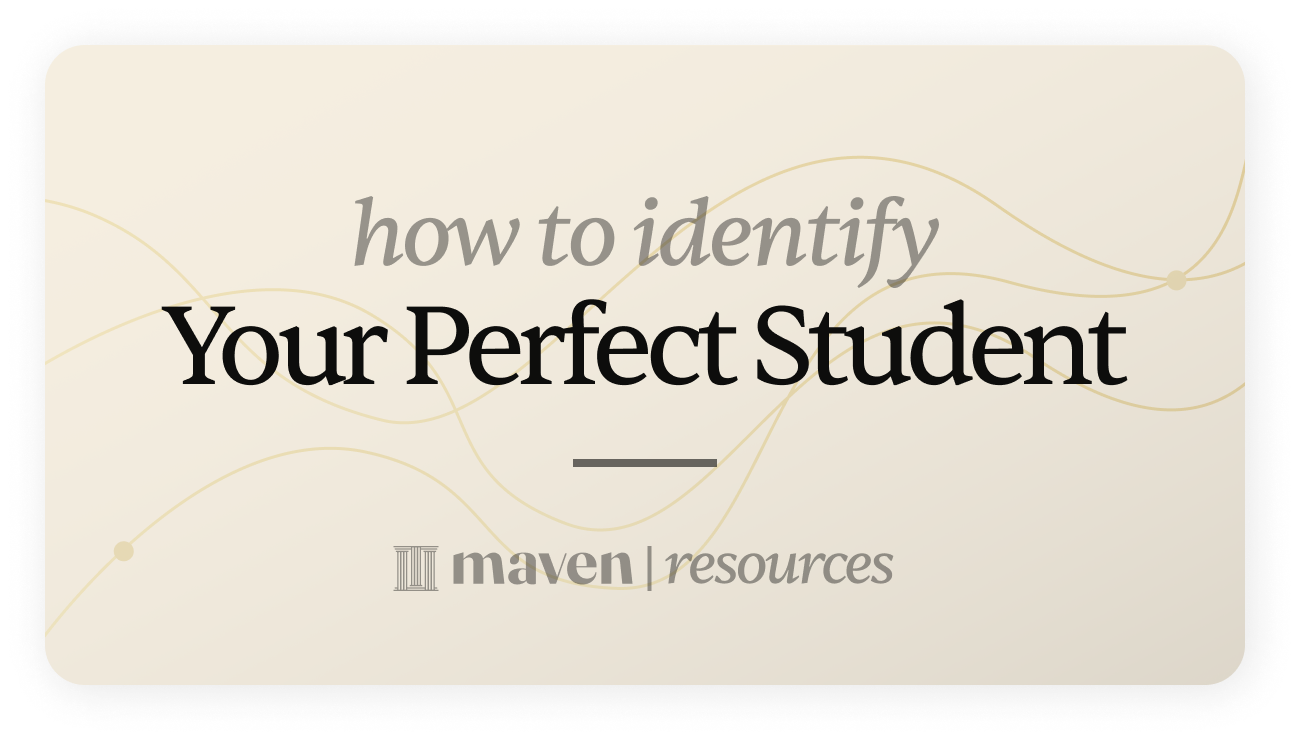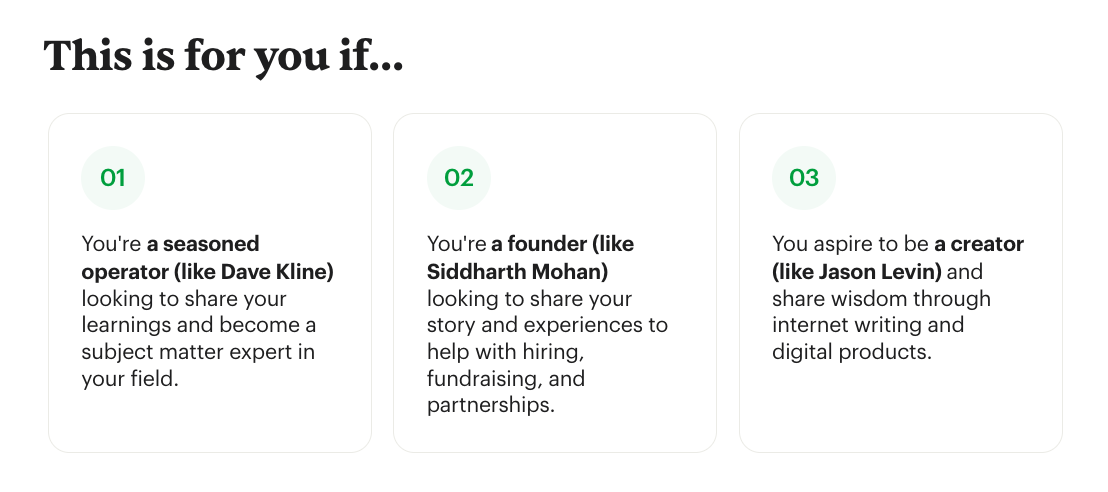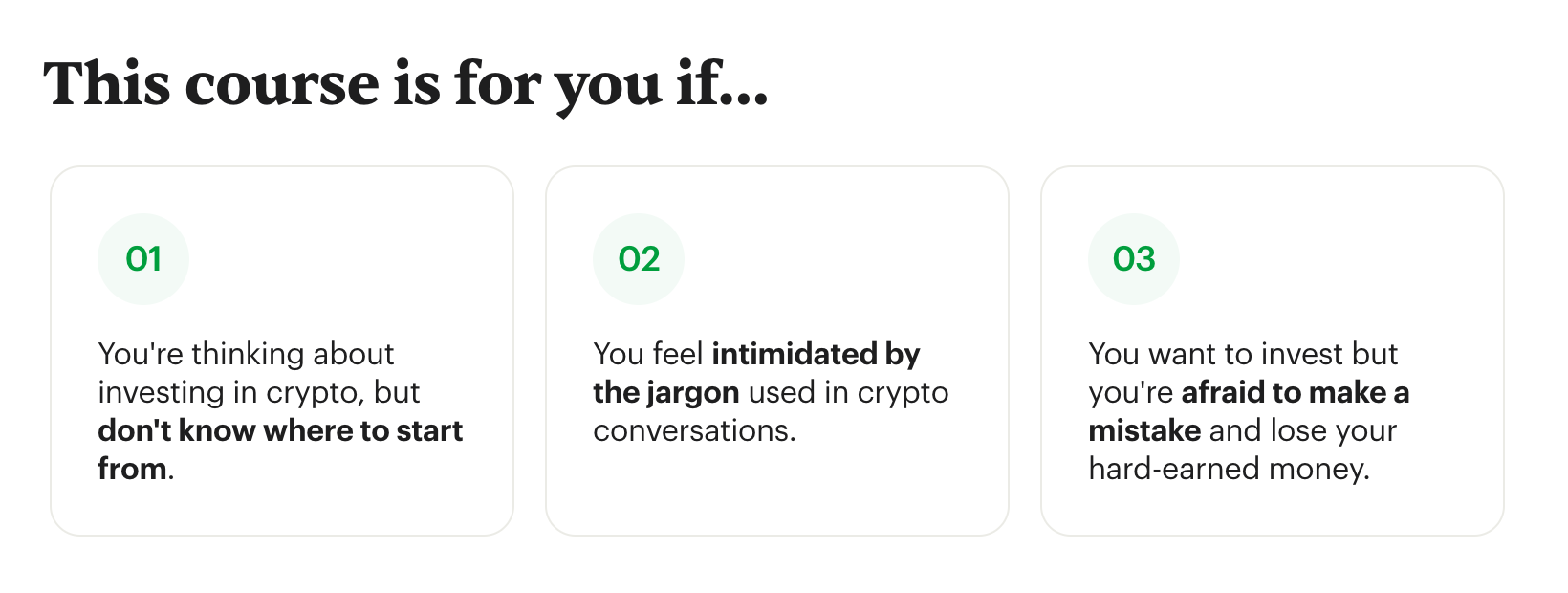4 ways to identify the perfect student for your course


"An audience is a single group of people that share the specific problem your [course] solves. Why does this matter? Because the key...is actually narrowing your audience down as much as possible to only the people your [course] is intended to help." —Tucker Max, author and founder of Scribe Media
1. What's the "vibe" of your ideal student?
- What does your ideal student call themselves (e.g., title, role, identity)?
- What do they care about?
- What communities are they a part of?
- Who do they aspire to be like in their industry?

2. What pain points are they facing today?
- What is your ideal student sick of?
- What are they losing sleep over?
- What are they frustrated by?

3. Where do they want to be?
- What does your ideal student secretly wish they could change about their life or work?
- What do they dream about for their life or work?
- What do they want to be different about their life or work?

4. Who is it NOT for?
- What are the roles/titles/levels in your industry your course is not a fit for?
- What are the pain points that your course won't address?
- What are the desired outcomes that are out of scope?

Related Courses
Sell the Idea: How to pitch and present for maximum impact
This course covers three simple and widely applicable principles that will help make your ideas more memorable and get buy-in.
Perfect Your Go-To-Market Strategy
Discover how to get customers and a competitive advantage so that you'll pitch to investors with confidence.
How to get inside your customers' heads
Master the art & psychology of customer interviews - and become the go-to person for rich insights & deep customer understanding
Crafting The Perfect Pitch
Learn how to improve your fundraising, sales, and hiring through better communication.
Map Your Book
Refine your idea and plan your nonfiction book chapter-by-chapter to get unstuck, find inspiration, and write a book that sells.
Closing for early-stage founders & salespeople
Improve your win rate by asking the right questions to get all the info you need and win over your buyers.